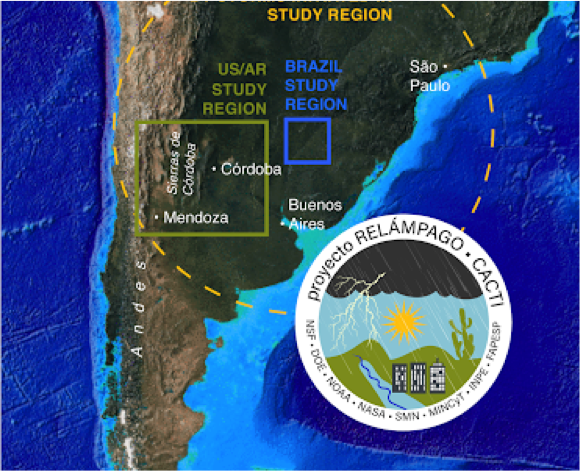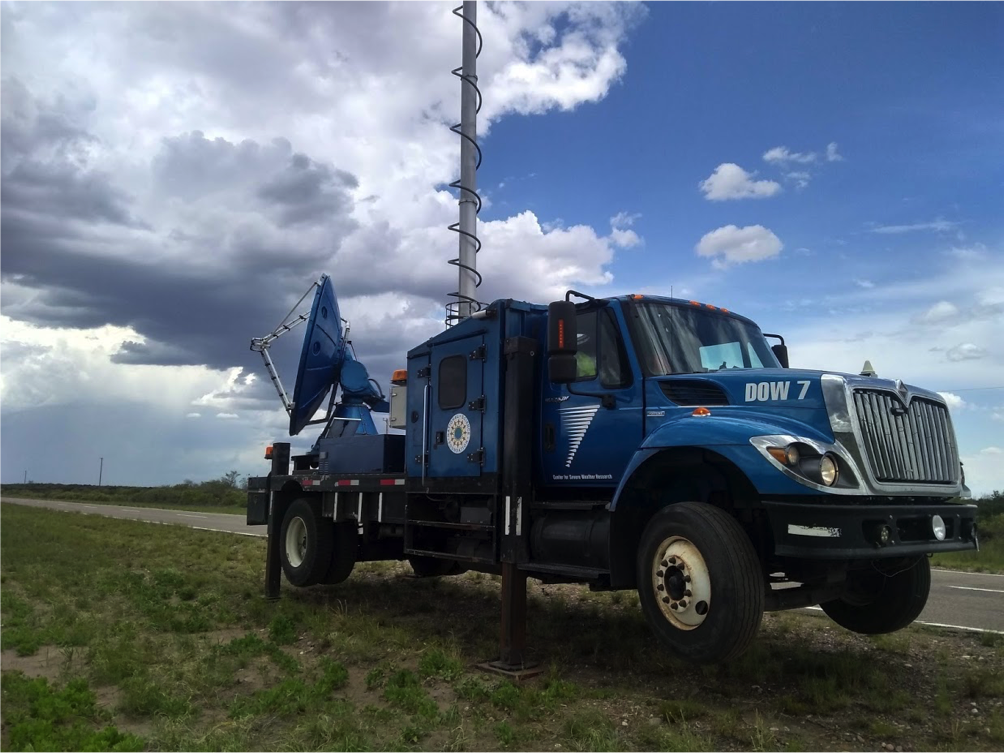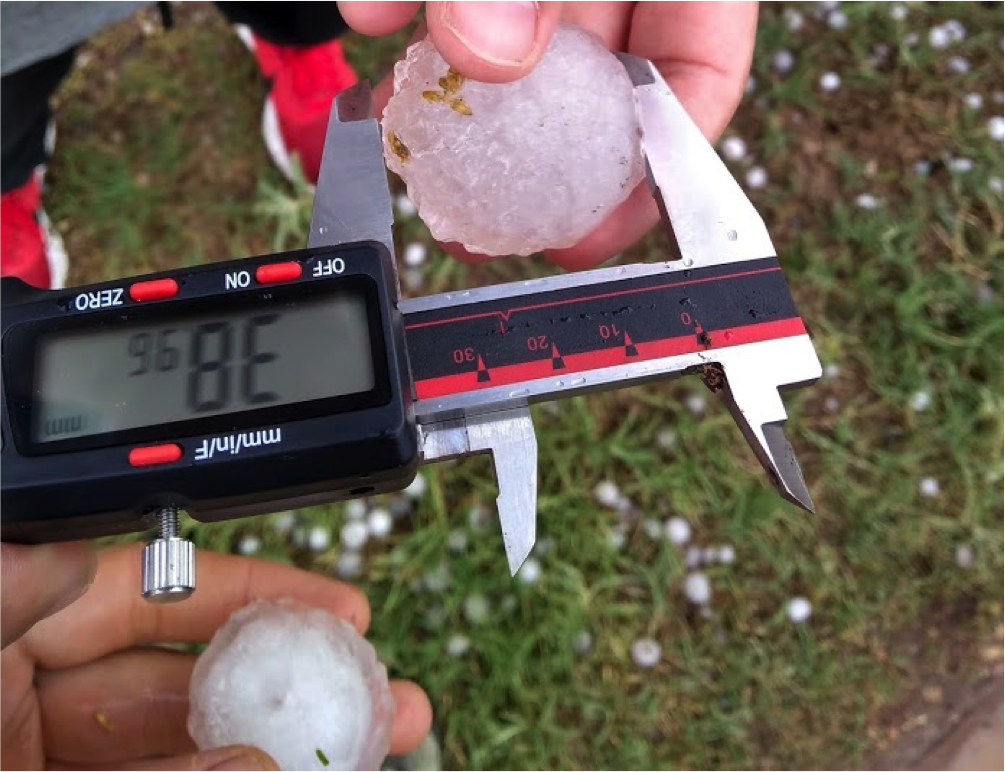by Joshua Soderholm
Central Argentina is home to some of the most extreme thunderstorms globally. Giant hail, flash flooding and severe lightning regularly impact the communities and famous vineyards along the eastern side of the Andes mountain range.
To understand what makes these storms so severe, over 160 scientists from around the world conducted an atmospheric science field project called RELAMPAGO (Spanish for a ‘flash of lightning’) between 1 November and 16 December 2018.

What is an atmospheric science field project?
Imagine a fleet of vehicles carrying mobile weather radars, weather balloons, weather stations and hail measuring equipment targeting a single thunderstorm. Two Australians, myself and Nicholas McCarthy (UQ) volunteered to joined the hail team for an experience of a lifetime.

Thunderstorm field campaigns aren’t all action-packed as the movie Twister would suggest. The majority of our time was spent planning, monitoring the weather, and deploying equipment. This included driving thousands of kilometres driving across Argentina to deploy dozens hail-impact sensors. The actual storm chasing and observing makes up the remaining 5%.
One particularly severe hailstorm was observed on November 26, 2018, in the Mendoza Provence. Thunderstorms on this day were firing early, leaving us little time between deploying instrument and chasing.
Rolling off the 3000 m foothills of the Andes, the first thunderstorm moved into the field experiment domain just after noon. Reports of 1 cm hail started to filter through on the satellite phone (no mobile coverage here) and we held our ground watching the storm continuing to strengthen.
After deploying extra hail-impact sensors, we positioned ourselves just outside the anticipated storm path. Hearing the first ‘ding’ on the car roof, followed by a ‘thump’ from a 4+cm stone meant efforts to avoid the hail were a complete failure. Immediately after the hail stopped we whirled into action, measuring the hail size using calipers and flying the HailPixel survey drone.

Volunteering for project RELAMPAGO was an incredibly rewarding experience. Not only for a better understanding hailstorms, but the opportunity to engage with the communities and growers impacted by hail.
Vineyards are particularly vulnerable, with small hailstones being enough to wipe-out an entire crop and effect the growers income for many years. In response, a range of techniques are used to reduce the impact of hail. Two very questionable techniques, hail cannons and hail-suppression seeding aircraft, were operating immediately prior to the devastating hailstorm on the 26 November.
Thankfully, investment in Kevlar netting is increasing, reducing the economic impacts for the wine growing regions.
